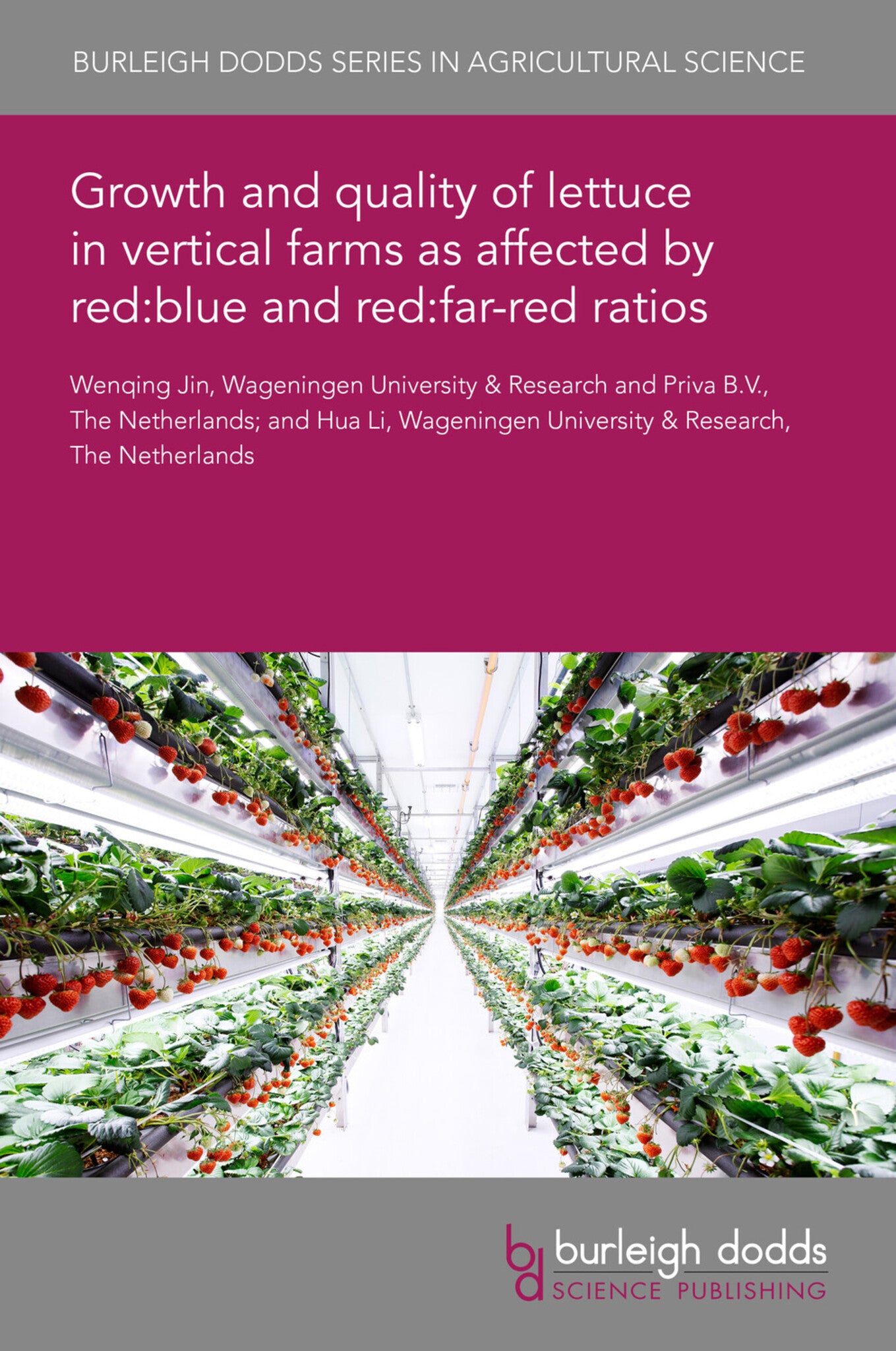We're sorry. An error has occurred
Please cancel or retry.
Growth and quality of lettuce in vertical farms as affected by red:blue and red:far-red ratios

Some error occured while loading the Quick View. Please close the Quick View and try reloading the page.
Couldn't load pickup availability
- Format:
-
14 September 2023

Light-emitting diodes (LED) are advancing the development of indoor vertical farming due to their varied light spectrum and photon flux density. The substantial energy cost of lighting systems requires improvement. This chapter reviews three major spectra applied to lettuce cultivation in indoor vertical farming systems. Red and blue light are the most efficient spectra for chlorophyll absorption and far-red light promotes light interception and increases photochemical efficiency. Research shows that the photon flux ratio between red and blue light affects plant architecture, leaf and photosynthetic characteristics, biomass production and phytochemical compound accumulation. Additional far-red over photosynthetically active radiation triggers shade avoidance responses and increases light interception, which combines with planting density effects. Aside from the above spectra, biomass production and quality, utilization of other light spectrum and dynamic lighting as well as plant modelling should be considered to promote light use efficiency in indoor vertical farming.

SCIENCE / Life Sciences / Horticulture, Commercial horticulture, TECHNOLOGY & ENGINEERING / Agriculture / Agronomy / Crop Science, TECHNOLOGY & ENGINEERING / Agriculture / Sustainable Agriculture, Sustainable agriculture, Agricultural science, Agronomy and crop production

- 1 Introduction
- 2 Light spectra: Red and blue
- 3 Light spectra: Far-red and red
- 4 Planting density
- 5 Conclusion and future trends
- 6 Where to look for further information
- 7 References



